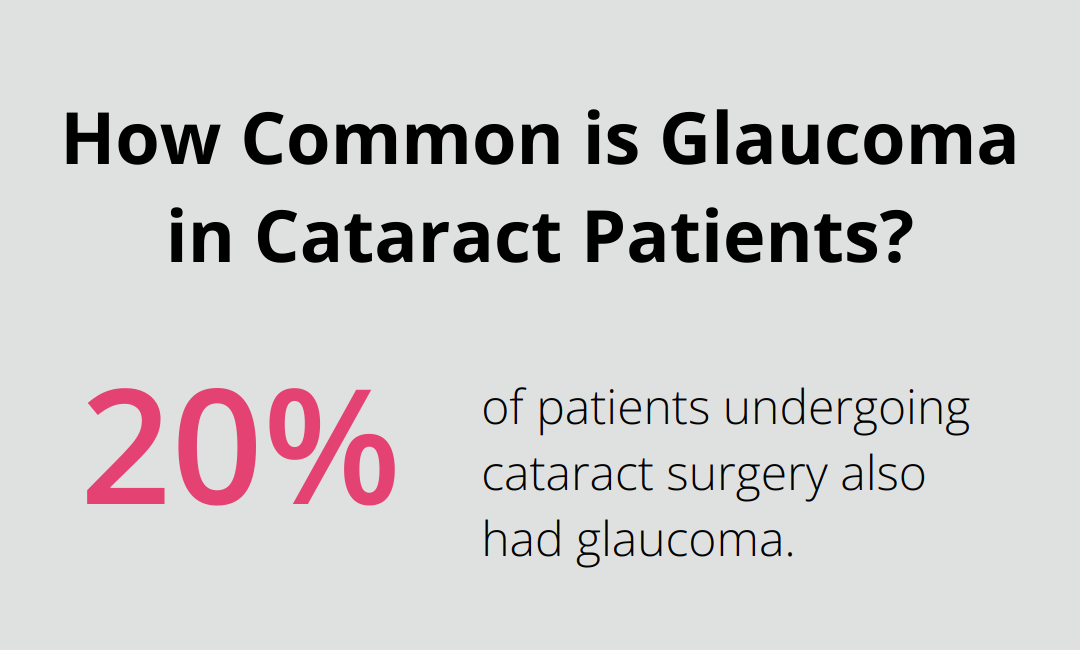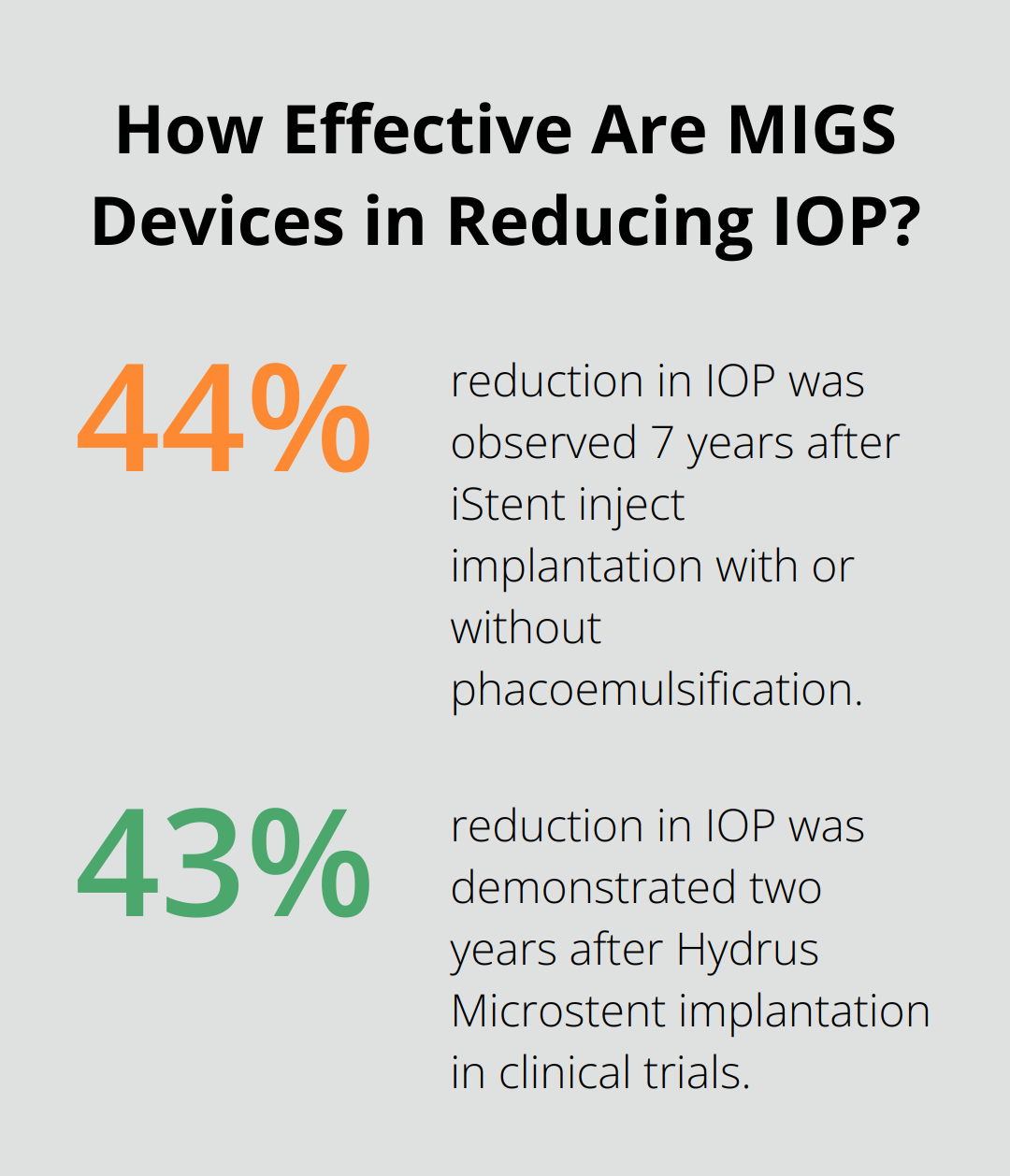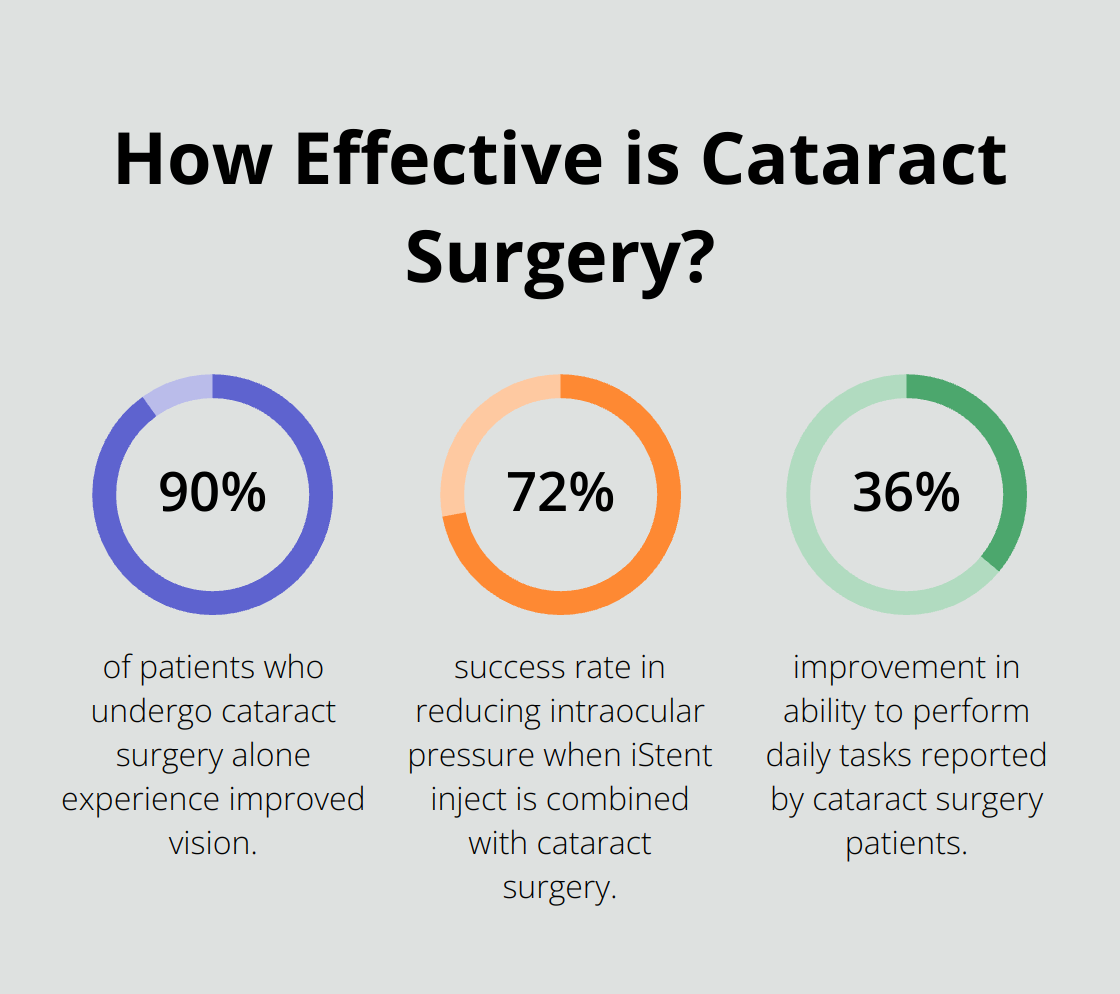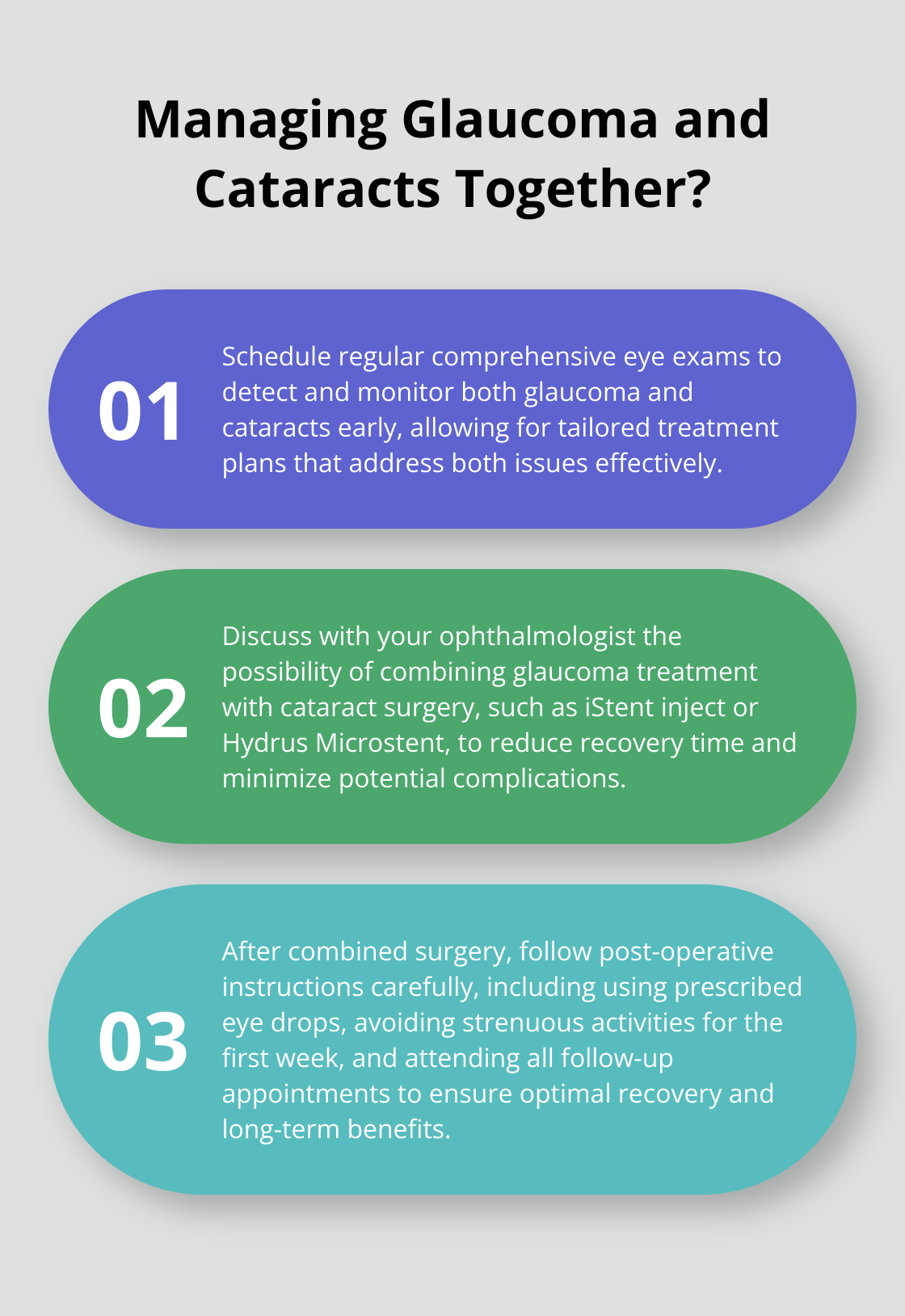Cataract and Glaucoma Treatment: Can you treat glaucoma during cataract surgery?
At Drs. Campbell, Cunningham, Taylor & Haun, we often see patients dealing with both cataracts and glaucoma. These two eye conditions frequently occur together, especially as we age.
Many patients wonder if it’s possible to address both issues simultaneously. In this post, we’ll explore how cataract and glaucoma treatment can be combined with cataract surgery, offering a comprehensive solution for better eye health.
What Are Glaucoma and Cataracts?
The Silent Thief of Sight: Glaucoma
Glaucoma refers to a group of eye diseases that damage the optic nerve, often due to increased pressure within the eye. It earned the nickname “silent thief of sight” because it progresses without noticeable symptoms until vision loss occurs. The Glaucoma Research Foundation reports that around 4.22 million people in the U.S. have glaucoma, but only half know about their condition.

Open-angle glaucoma, the most common type, develops slowly over time. Symptoms may include:
- Gradual loss of peripheral vision
- Tunnel vision in advanced stages
- Eye pain or headaches (in some cases)
Early detection through regular eye exams is essential to prevent irreversible vision loss.
Clouding Your Vision: Cataracts
Cataracts occur when the eye’s natural lens becomes cloudy, which leads to blurred or dimmed vision. Cataract surgery is a quick, minimally invasive procedure that can restore vision for many Americans age 65 and older.
Common symptoms of cataracts include:
- Cloudy or blurry vision
- Colors appear faded
- Increased sensitivity to glare
- Difficulty seeing at night
Unlike glaucoma, doctors can surgically remove cataracts and restore vision with an artificial lens implant.
When Glaucoma and Cataracts Coexist
These conditions often occur together as people age. A study in the Journal of Glaucoma found that about 20% of patients undergoing cataract surgery also had glaucoma. This coexistence presents both challenges and opportunities for treatment.
Eye care professionals (such as those at Drs. Campbell, Cunningham, Taylor & Haun) frequently encounter patients with both conditions. A comprehensive approach involves thorough eye exams to detect and monitor both glaucoma and cataracts, which allows for tailored treatment plans that address both issues effectively.
Regular check-ups and early intervention play a key role in maintaining healthy eyes and clear sight as you age. The next section will explore how eye care specialists can combine treatments for these conditions, offering patients a more efficient and effective solution to their eye health concerns.
Can Glaucoma Treatment Be Combined with Cataract Surgery?
Benefits of Simultaneous Treatment
Combining glaucoma treatment with cataract surgery offers several advantages for patients with both conditions. A smaller data set showed a durable effect of the procedure, with a 16% reduction in IOP and 63% fewer medications at 5 years for cataract surgery plus iStent.

This approach reduces the need for multiple surgeries, decreases overall recovery time, and minimizes potential complications. Patients also benefit from a single anesthesia session and fewer follow-up appointments, making the process more convenient and cost-effective.
Advanced Glaucoma Procedures During Cataract Surgery
Several glaucoma procedures can accompany cataract surgery. While trabeculectomy (which creates a new drainage channel for excess fluid in the eye) was once common, modern techniques have largely replaced it.
Minimally Invasive Glaucoma Surgery (MIGS) has transformed combined treatments. These procedures are less invasive, have shorter recovery times, and integrate easily into cataract surgery. Popular MIGS options include:
- iStent inject: This tiny stent (about 1mm in length) inserts into the eye’s drainage system to improve fluid outflow. Recent studies show that iStent inject implantation with or without phacoemulsification produced significant and durable 7-year reductions in IOP (~ 34–44% reduction) and medications.
- Hydrus Microstent: This flexible, 8mm device expands Schlemm’s canal, enhancing the eye’s natural drainage. Clinical trials have demonstrated a 43% reduction in IOP two years after implantation.
- Endocyclophotocoagulation (ECP): This laser procedure treats the ciliary body, reducing fluid production. When combined with cataract surgery, ECP has shown to lower IOP by an average of 31.4% at 12 months post-operation.
Personalized Treatment Plans
The choice of procedure depends on various factors, including glaucoma severity, eye anatomy, and overall health. Experienced ophthalmologists carefully evaluate each patient to determine the most suitable approach.
While combined procedures offer numerous benefits, they may not suit everyone. Factors such as the stage of glaucoma, cataract progression, and individual health conditions play a key role in determining the best treatment strategy.
For instance, patients with advanced glaucoma might require more aggressive treatment that may not be compatible with simultaneous cataract surgery. In such cases, staged procedures might be more appropriate.
Considerations for Combined Surgery
Patients should discuss the potential risks and benefits of combined surgery with their eye care professional. Some considerations include:
- Recovery time: Combined procedures may require a slightly longer recovery period compared to cataract surgery alone.
- Success rates: The success of combined surgery can vary depending on the specific techniques used and individual patient factors.
- Long-term outcomes: Patients should understand the expected long-term benefits and potential need for additional treatments in the future.
As we move forward, let’s explore the recovery process and outcomes associated with these combined procedures, providing a clearer picture of what patients can expect post-surgery.
What to Expect After Combined Glaucoma and Cataract Surgery
Recovery Timeline
Recovery from glaucoma surgery varies, depending on the surgery. Most people notice recovery in vision in days to weeks after the surgery. However, patients often notice visual improvements within days. Most individuals return home on the same day as the surgery. Follow-up appointments are scheduled for the next day, week, and month post-operation.

During the initial week, patients should avoid strenuous activities and shield their eyes from bright light. Doctors prescribe eye drops to prevent infection and reduce inflammation. Patients might experience some discomfort, blurry vision, or a gritty sensation in the eye during this period (which is normal).
Success Rates and Outcomes
The American Academy of Ophthalmology reports that about 90% of patients who undergo cataract surgery alone experience improved vision. When combined with glaucoma treatment, success rates vary depending on the specific procedure. For example, the iStent inject has demonstrated a 72% success rate in reducing intraocular pressure when combined with cataract surgery.
Potential Complications
While generally safe, combined procedures carry some risks. These may include:
- Temporary increase in eye pressure
- Inflammation or infection
- Bleeding inside the eye
- Retinal detachment (rare, occurring in less than 1% of cases)
Eye care professionals closely monitor patients post-surgery to address any complications promptly. Advanced techniques help minimize risks and ensure optimal outcomes.
Long-Term Benefits
Combined glaucoma and cataract surgery offers significant long-term benefits. A study published in the Journal of Cataract & Refractive Surgery found that patients who underwent combined surgery maintained lower intraocular pressure for up to five years post-operation compared to those who had cataract surgery alone.
Moreover, combined procedures often reduce or eliminate the need for glaucoma medications. This improves quality of life and reduces the risk of side effects associated with long-term medication use.
Improved vision from cataract removal enhances daily activities and overall quality of life. The American Optometric Association notes that cataract surgery patients report a 36% improvement in their ability to perform daily tasks.
Ongoing Care
While combined surgery offers numerous benefits, regular eye check-ups remain essential. Glaucoma is a chronic condition that requires ongoing management. Annual comprehensive eye exams help monitor eye health and adjust treatment as needed.
Patients should be aware of potential warning signs that require immediate attention, such as sudden vision changes, eye pain, or increased light sensitivity. Prompt action in these cases can prevent potential complications and ensure the best possible long-term outcomes.
Final Thoughts
Cataract and glaucoma treatment with cataract surgery offers a comprehensive solution for patients with both conditions. This approach streamlines the treatment process, reduces recovery time, and often leads to better long-term outcomes. Patients can experience improved vision and better management of their eye health with a single procedure.

The decision to undergo combined treatment should always involve consultation with an experienced eye care specialist. Every patient’s situation is unique, and what works best for one person may not be ideal for another. A thorough evaluation of eye health, overall medical condition, and lifestyle needs determines the most appropriate treatment plan.
At Drs. Campbell, Cunningham, Taylor & Haun, in Knoxville, TN, we provide expert eye care services, including advanced cataract and glaucoma treatment. Our team of skilled professionals uses state-of-the-art technology to deliver personalized care tailored to each patient’s specific needs (including combined procedures when appropriate). We encourage you to schedule a consultation with our team to develop a treatment plan that addresses your unique eye care needs and helps you maintain clear, healthy vision for years to come.